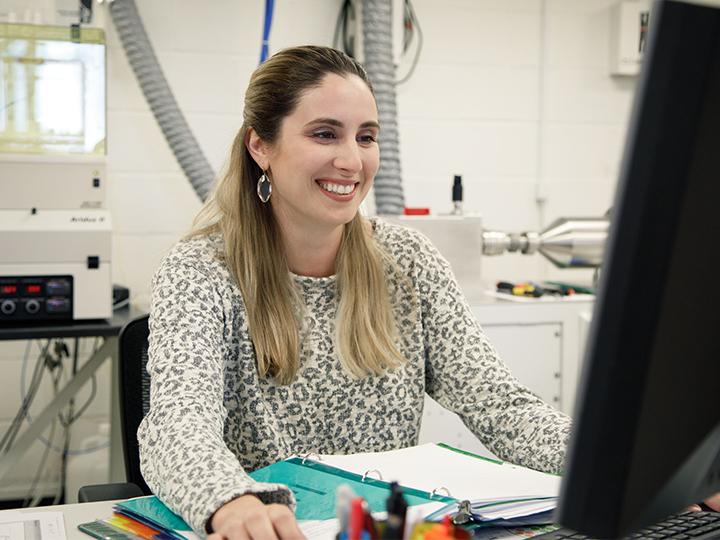UH Geology student awarded $285,000 NASA grant

Credit: University of Houston
Joanna Clark has been interested in geology ever since she was a child. Today, the University of Houston doctoral student is turning that curiosity into a career and getting noticed by NASA, which awarded her a $285,000 grant to develop a technique that could one day be used to better understand past climate conditions on Mars.
“We hope to have samples from Mars one day and when we do, we need to be ready to evaluate them. This could help give us a better understanding of how the planet has changed over millions of years,” said Clark, who is studying the geochemistry of Mars.
For now, Clark’s research will focus on creating silica minerals in the laboratory to discover how they form in subzero temperatures, such as those on Mars. Silica minerals, including quartz, are commonly found in Earth surface sediment, but silica was also detected in rocks and sediment on Mars by NASA’s Curiosity Rover.
The initial experiments have begun. “I am working on how to get the silica out of solution as a solid with all the right chemistry. Once I am able to do that, I will take the solid and analyze it for oxygen isotopes,” explained Clark, who has done previous studies on cryogenic opal-A, which is silica that forms in brine veins between growing water ice crystals.
Tom Lapen, Clark’s research advisor and chair of the Department of Earth and Atmospheric Sciences in the UH College of Natural Sciences and Mathematics, said silica might be able to preserve the conditions under which it actually precipitated, or became a solid, from a liquid. In other words, silica found on Mars is a potential source of past climate information.
Lapen and Clark are working with Zach Sharp, who runs the Center for Stable Isotopes at the University of New Mexico. Sharp developed the analytical technique and Clark will build upon it by investigating silica samples formed below zero degrees Celsius.
“Joanna is competing with some of the best scientists in the country. Most of them are professors and researchers who have been doing this a long time,” said Lapen, referring to Clark’s NASA grant. “It indicates that the community views this project on really high merits and if successfully accomplished, it could have a big impact.”
Other project collaborators are Henry Chafetz, UH professor of geology and Elizabeth Rampe, an exploration mission scientist in the Astromaterials Research and Exploration Science Division at the Johnson Space Center.
###
Media Contact
Sara Tubbs
[email protected]
713-743-4248
Original Source
http://uh.





